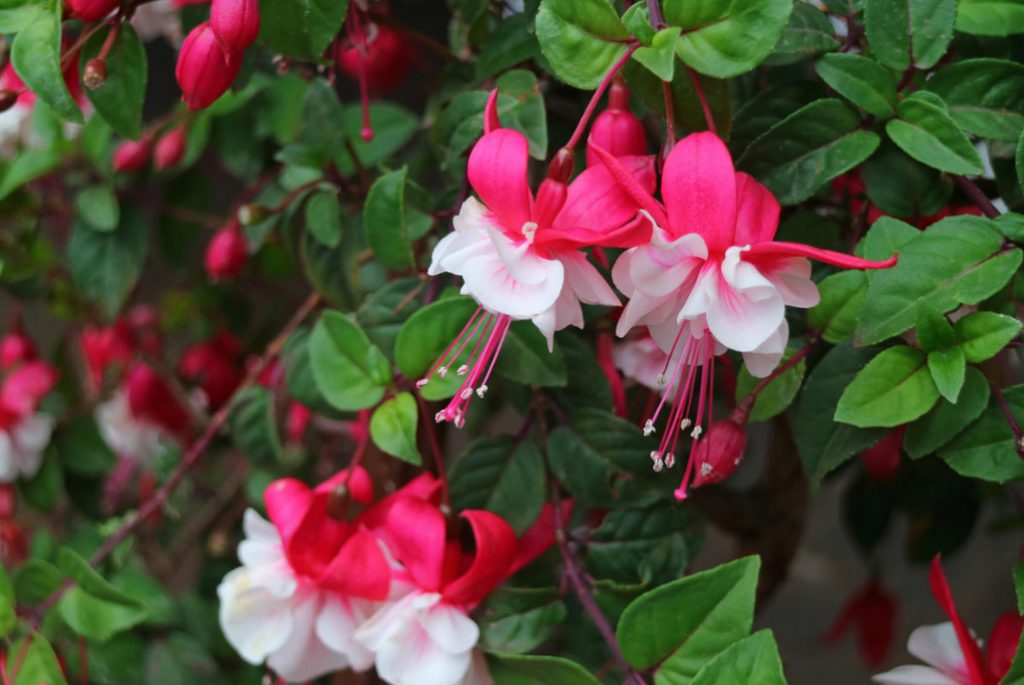Ordinary fuchsia is not as simple as it may seem: it has a huge potential and many advantages. Even a novice gardener can grow fuchsia, and the abundance of varieties with stunningly beautiful flowers deprives its fans of sleep and peace — how to collect everything in your garden?!
You probably already guessed that today my story will be about fuchsia — how to grow, propagate, and most effectively place it in the country. And I’ll start with the main thing.
Advantages of fuchsias
- Amazing beauty of flowers in a variety of color combinations.
- Spectacular and long — lasting — until late autumn-flowering.
- Take out the penumbra.
- Quickly and easily propagated by cuttings.
- Not capricious in winter.
Little history
Once, as an elderly worker of the Botanical garden told me, a lot of fuchsias were planted in it for the summer. Potted plants occupied temporary residence in various flower beds. This was convenient, because at the end of October they were again transplanted into pots and brought to the greenhouse. Flower primas wintered there; in particularly cold periods, the room was heated.
Yes, in the middle of the last century in parks, fuchsia was very much loved, for its elegant attire it was affectionately called “ballerina”. Especially welcome basket types — the old plants. Unfortunately, today in summer flower beds fuchsia is not a frequent guest. It is not among the seasonal plants that are displayed in the flower beds of the Garden.
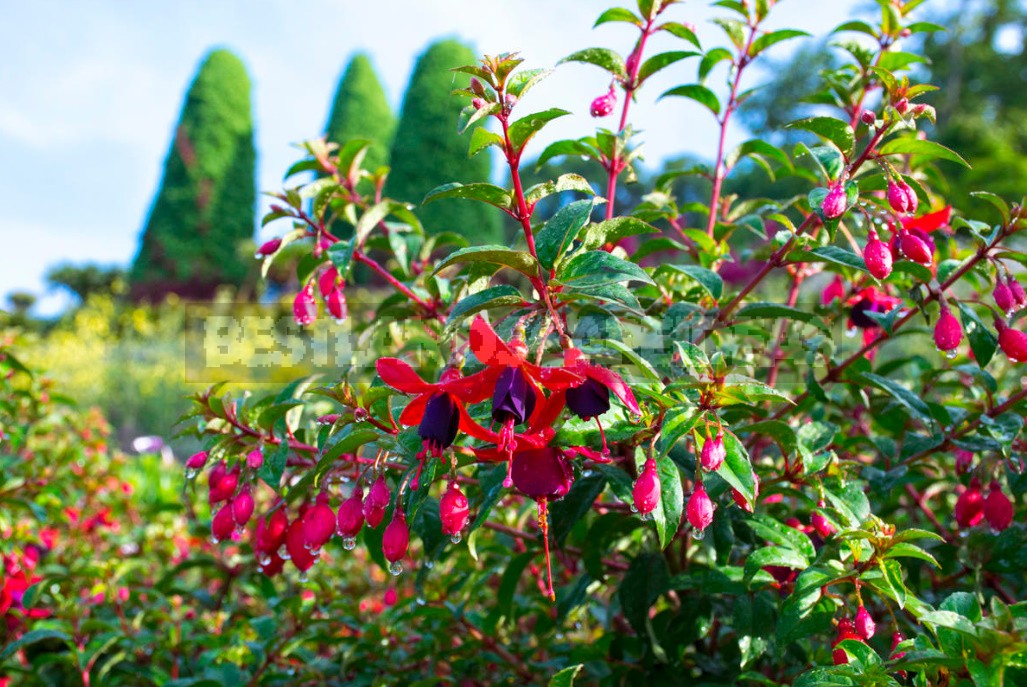
But this is probably temporary, and I very much hope that soon fuchsia will again take its place of honor in the city’s flower beds and in suburban front gardens.
Growing fuchsia in the open ground
Capricious or demanding it can not be called, but some features of cultivation must be taken into account.
Choosing a location
For placement of fuchsias, a semi-shaded place is ideal, where they will be covered by their neighbors, which will prevent overheating of the roots; this condition is especially important for potted plants. In the shade, they bloom much worse. And in the sun, and even in hot summer, they can bloom very quickly, in a few weeks. Then, as a rule, there is a pause, during which fuchsia is deprived of the main attribute of its charm-flowers.
Clipping
To prevent such jumps in development, it is necessary from time to time to cut long shoots that have strayed from the desired contour. So your fuchsia will become more accurate-plus pruning will promote the growth of side shoots with new buds that will prolong flowering. Withered flowers should be regularly removed so that an ovary is not formed, which can weaken the plant.
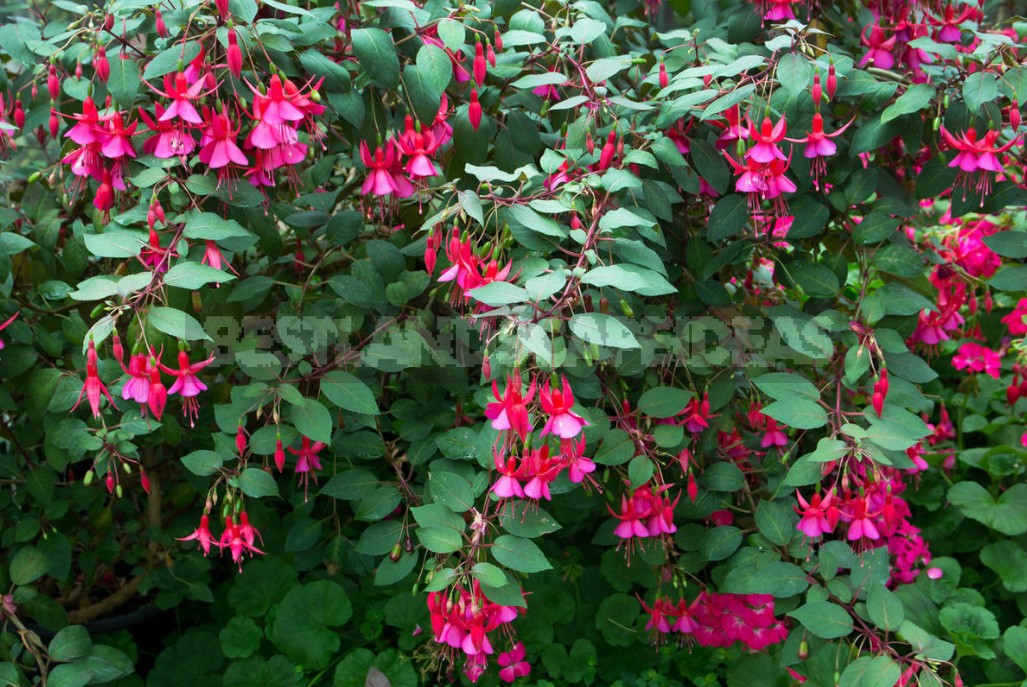
The nuances irrigation
Flowering fuchsias need regular watering, which is best done before 9 am and after 17 PM. At the same time, you can give them a shower, they love it. Overheating of roots growing in containers can be eliminated by using “smart pots” or by placing the container in the container (the outer one should be light).
Useful advice. Water, but in moderation. In any case, do not fill, especially in a limited amount of soil (potted). Fuchsia is enough once to be in conditions of stagnant waterlogging, and it can not be restored!
Subtleties of top dressing
Container and potted fuchsias are fed from March to September 1 time a week with liquid fertilizer for balcony flowers. The concentration recommended by the manufacturer should be reduced by half. The alternative is a long-acting fertilizer. Do not carry out fertilizing on dry soil, first be sure to water the plant.
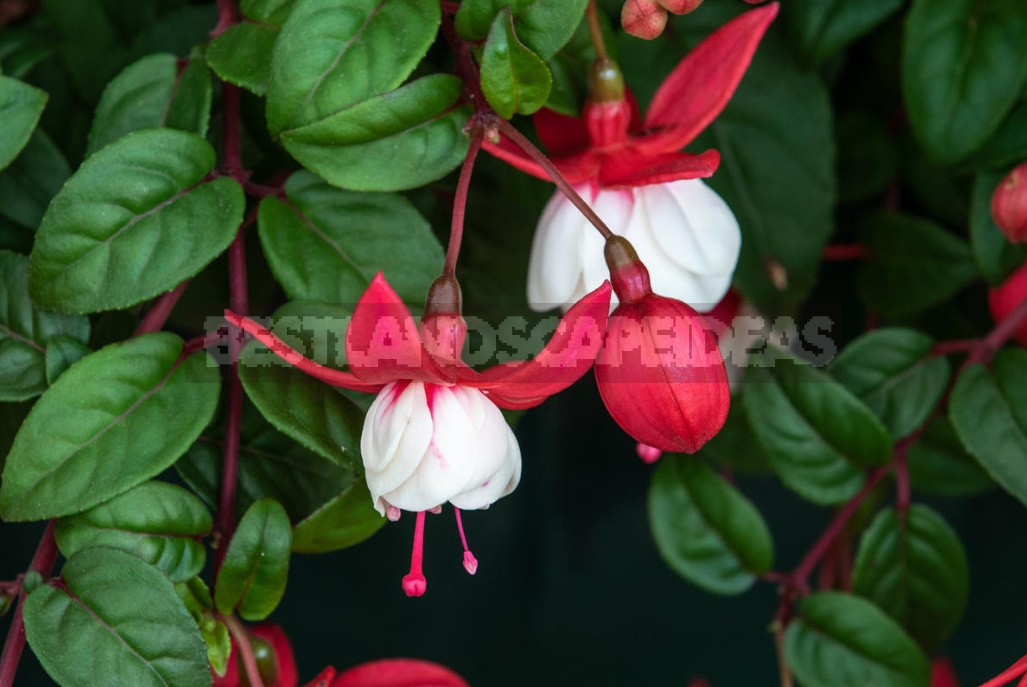
Pests
Examine your fuchsias for the appearance of Aleyrodidae, which can settle on them even in the open air. Use insecticides against it (according to the instructions). You can attach a special patch to the stem fuchsias, which will protect the plant from Aleyrodidae for 2 months.
Wintering
In autumn, carefully transplant the fuchsia into a pot and bring it to a non-freezing bright room, so you will save it until spring in its usual form, with leaves. If it is not possible to create such wintering conditions, take it to the basement, where you store vegetables. Note that in the dark at a temperature of +5…+10°C fuchsia will shed all the leaves, this is normal.
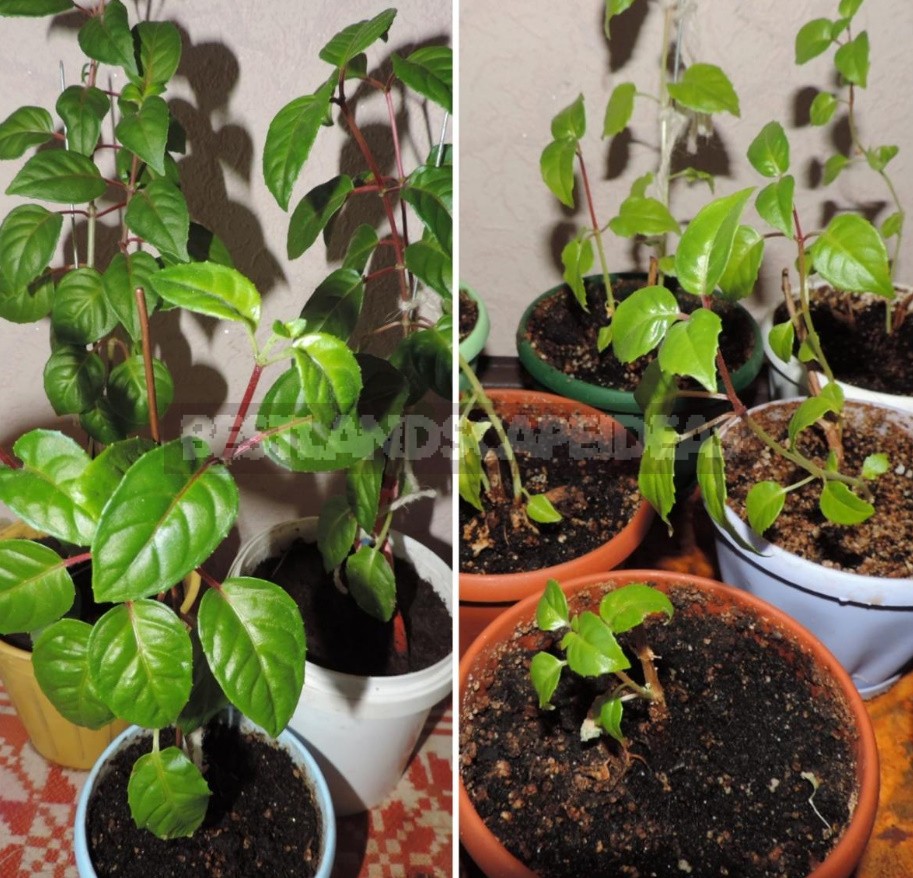
Useful advice. Before moving to a winter apartment, do not forget to remove all the buds, flowers, and young untreated shoots.
Planting in the spring
Fuchsia is taken out of the basement in March. First put in a light and warm place. As soon as new leaves appear on the plant, it must be strongly cut, giving a beautiful shape (with this pruning, many side shoots and flowers are formed). Do not rush to plant fuchsia in the garden, wait for a steady heat.
Useful advice. For planting in containers, take only high-quality soil substrate for balcony plants; you can make it yourself from turf, peat, humus and sand, taken in a ratio of 0.5:1:1:0.5.
Reproduction of fuchsia
In spring (or autumn, in early September), cut off the tops of shoots 7-10 cm long, remove all the flowers and leaves, except for the upper pair. The stalk can be planted in a substrate consisting of earth and sand, and remove the container in the penumbra (regularly water!) or to put it in the water, where after 2-3 weeks it will give the roots.
To date, there is a huge range of fuchsias with flowers of different shapes, combined colors or monophonic varieties (white, pink, purple, red). Even if you couldn’t buy the seeds of your favorite variety, you can always try to propagate it with a stalk.
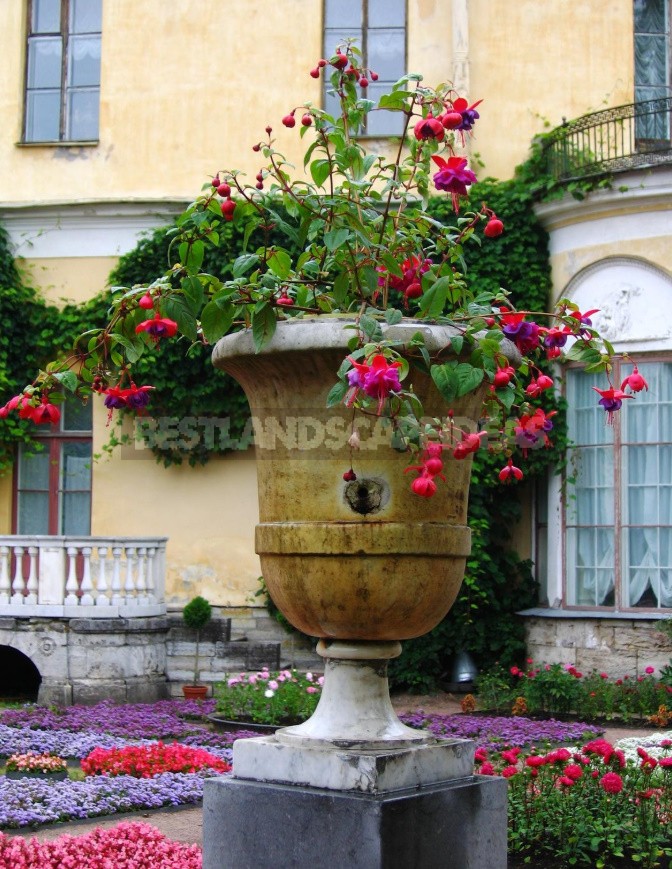
Placement of fuchsias in the country
Before considering fuchsias in various garden roles, let me remind you that their use depends on the form of growth.
- Stamp trees – in containers as accents at the entrance to the house (you need to buy or grow a pair of fuchsias of the same size and variety).
- Erect shrubs (can be small to medium-sized shrubs) – for planting around garden benches or in a mixborder, in which fuchsias can take up any empty space (both inside and around the edge). Thanks to the elegant flowers, they will be effective in any composition.
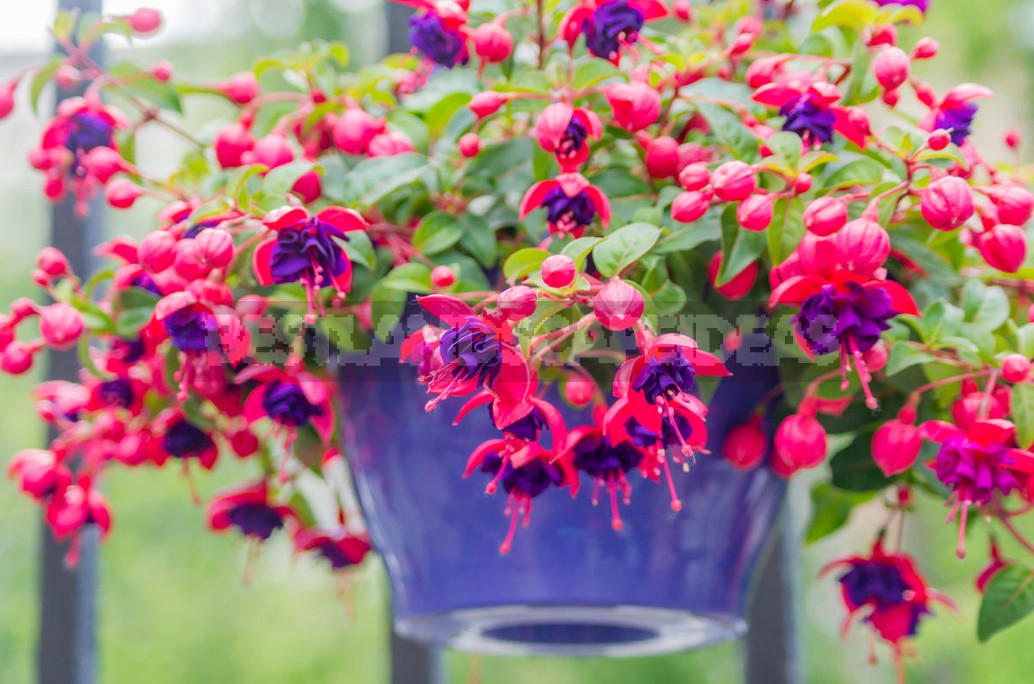
- Fuchsia, with drooping shoots good as basket plants. An incredibly beautiful picture can give even a single fuchsia in an interesting selected pot. So, red-purple prima will be good in purple, and white-pink, white-crimson, white-purple, white-red – in white. Fuchsia is so self-sufficient that it does not need neighbors in a limited space. But in the flower beds, she can and should find companions. In the penumbra, good neighbors of fuchsias can be the same shade trees.
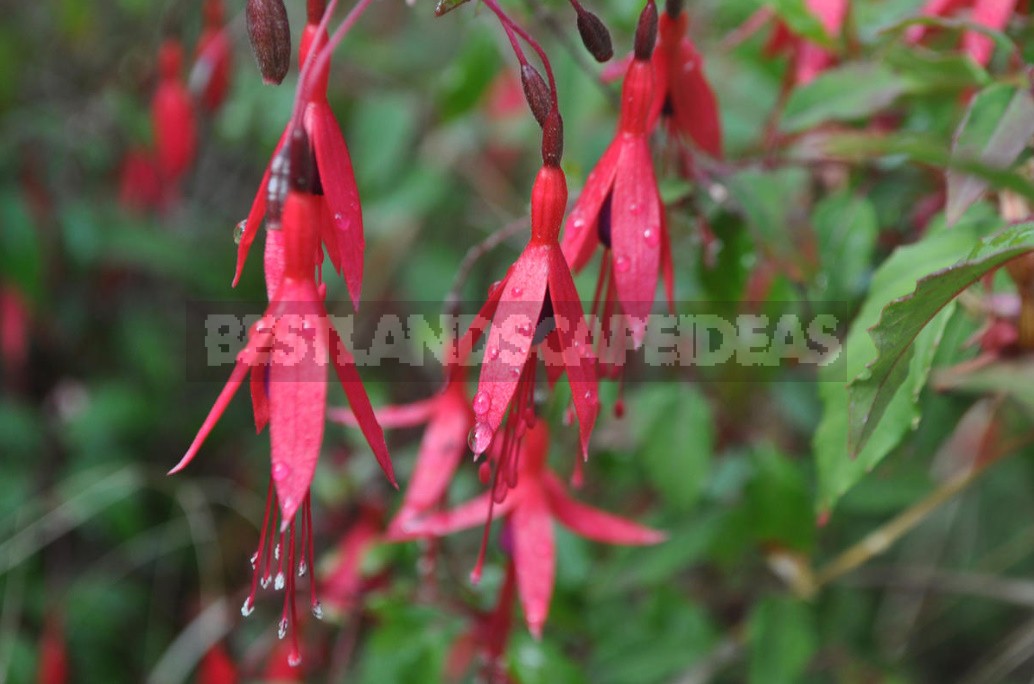
It is successfully used in a variety of compositions, including in the placement and container cultures to decorate the entrance to the house, an open terrace.
Useful advice. Any fuchsia growing in your apartment, in the house, you can try to plant in the summer in the open ground, in the penumbra of a flower garden or in a garden vase.
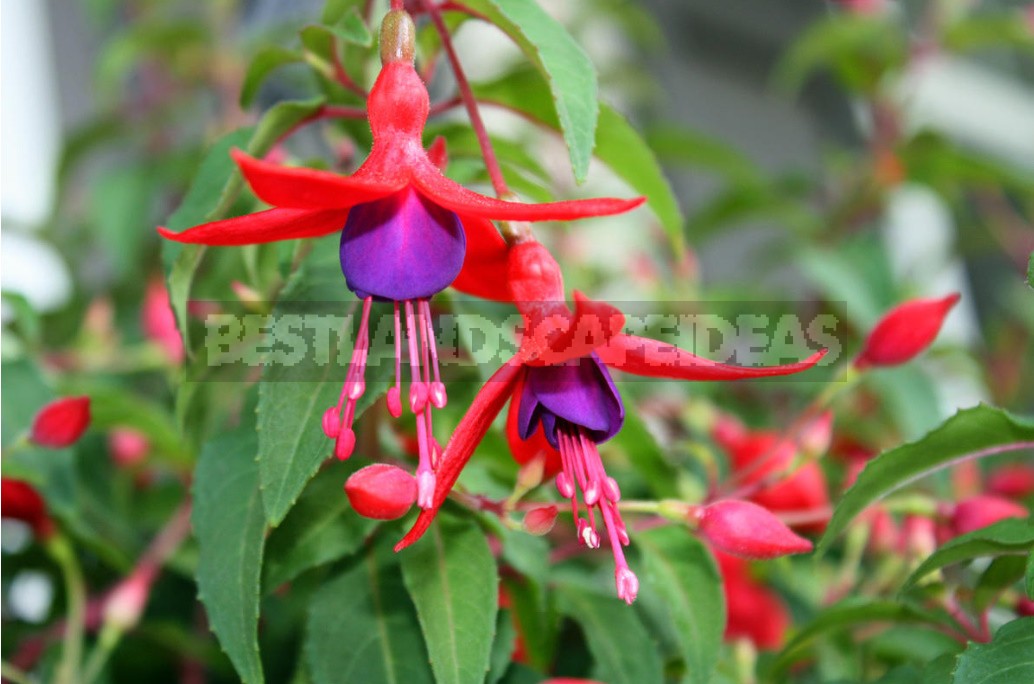
Have you tried planting fuchsia for the summer in the open ground or a garden vase? Was there much trouble? By the way, and this season it is not too late to move your fuchsia in a suburban flower garden. Would you dare to take such a step?
